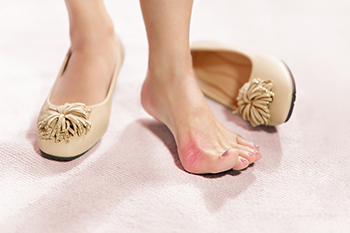Dr. Kennan T. Runte, DPM, FACFAS
Dr. Panah Nabili, DPM
Grass Valley, CA 95945
Dr. Kennan T. Runte, DPM, FACFAS
Dr. Panah Nabili, DPM

As you age, managing bunions becomes important for maintaining mobility and comfort. A bunion is a bony bump that forms at the base of the big toe, often caused by years of pressure, wearing improper footwear, or genetic factors. Over time, the joint can become more stiff and painful, especially during walking or standing. Choosing supportive shoes with a wide toe box helps reduce pressure on the bunion and prevents further irritation. Gentle stretching and strengthening exercises can improve joint flexibility and ease discomfort. Custom orthotics may also help realign the foot and reduce stress on the affected area. If you have a bunion that is causing any discomfort, it is suggested that you consult a podiatrist who can offer effective relief and treat methods.
If you are suffering from bunions, contact one of our podiatrists of Foothill Podiatry Clinic. Our doctors can provide the care you need to keep you pain-free and on your feet.
What Is a Bunion?
A bunion is formed of swollen tissue or an enlargement of boney growth, usually located at the base joint of the toe that connects to the foot. The swelling occurs due to the bones in the big toe shifting inward, which impacts the other toes of the foot. This causes the area around the base of the big toe to become inflamed and painful.
Why Do Bunions Form?
Genetics – Susceptibility to bunions are often hereditary
Stress on the feet – Poorly fitted and uncomfortable footwear that places stress on feet, such as heels, can worsen existing bunions
How Are Bunions Diagnosed?
Doctors often perform two tests – blood tests and x-rays – when trying to diagnose bunions, especially in the early stages of development. Blood tests help determine if the foot pain is being caused by something else, such as arthritis, while x-rays provide a clear picture of your bone structure to your doctor.
How Are Bunions Treated?
If you have any questions, please feel free to contact our office located in Grass Valley, CA . We offer the newest diagnostic and treatment technologies for all your foot care needs.